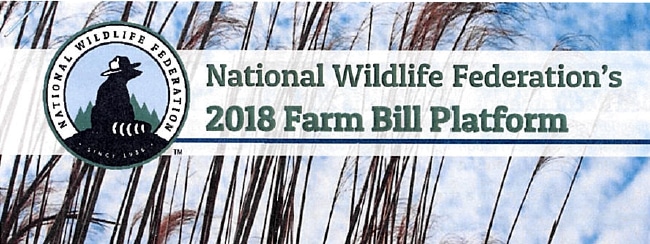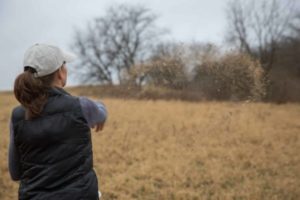
2018 is slated to be the year we get a new Farm Bill, but whether we do or not depends largely on the politics coming out of Washington. Last August, PRN Executive Director Carol Hays provided input at the US House Agriculture Committee Farm Bill listening session in Decatur where she introduced the committee to Regenerate IL, the PRN effort to encourage farmers to use farming and conservation practices that restore soil health, protect water quality, and improve habitat and on farm biodiversity. Recently, Carol attended a National Wildlife Federation meeting in Washington, D.C. where NWF affiliates and staff discussed the Federation’s priorities for the upcoming Farm Bill.

The Farm Bill is the most important source of resources for conservation in the Federal budget. In the 2014 Farm Bill, over 6% of the total $489 billion Farm Bill outlay was directed at conservation practices to protect soil, water, and wildlife. Since the 2014 Farm Bill, there has been an alarming rate of conversion of private wetlands, grasslands and forested lands to cultivation nationwide. Seventy percent of U.S. privately-owned land is now in agriculture or forestry. Opportunities for expanding conservation must focus on private lands.
While the current $5 billion per year for conservation still clearly aren’t enough resources to meet the nation’s conservation needs, conservation programs are very popular with farmers and ranchers, especially the Conservation Reserve Program (CRP) which pays for cover crops. There is more demand than available resources. CRP supports practices that sequester carbon, prevent erosion, and reduce the need for and loss of fertilizers into our waterways. In Illinois, we lost over a half million acres from CRP in 2017 alone due to expiring contracts that could not be refunded. That’s a lot of land that could be building soil health, reducing CO2 in the atmosphere, reducing the use of fertilizers and pesticides, soaking up flood waters, protecting water quality, and providing critical habitat and habitat protections for fish, mussels, birds, pollinators and other threatened species.
While we want to see increased funding for wildlife in working lands programs overall, expanding or at least preserving funding for CRP at current levels is a top priority for the wildlife and conservation community in Illinois and nationwide. This program along with other working lands programs like EQIP (Environmental Quality Incentives Program) and the Conservation Stewardship Program (CSP) provide funding to support agricultural and conservation practices that are key to improving water quality. We also want to see more resources available for conservation easements that can be directed toward our state’s wildlife priorities, such as habitat for ground nesting birds. Importantly, all of these conservation programs should be targeted to ensure they meet our natural resource needs and do not incentivize the use of practices that will be abandoned with fluctuations in crop prices.
The 2014 Farm Bill also linked crop insurance for farmers with conservation protections. Known as the Conservation Compliance provision, the changes were designed to ensure that crop insurance focused on keeping sensitive areas such as wetlands and marginal areas out of cultivation. We want to see crop insurance better aligned with and supportive of conservation and encouraging a whole farm approach to conservation holistically integrated with farming systems wherever possible.
Three members of Illinois’ Congressional delegation (Reps Davis, Bustos, and Bost) sit on the House Agriculture Committee, which is currently working on the elements of the massive bill and has signaled that it will introduce a bill in the House for a vote early this spring. Illinoisans have a unique opportunity to express our concerns and needs for conservation on our vast amount of farmland. Join us in calling on these members and our whole delegation to pass a Farm Bill this year that increases overall funding for conservation programs and includes strong provisions for wildlife, water quality and quantity, and healthy soils that support healthy lands and healthy communities. Watch for upcoming opportunities to learn more about the Farm Bill and messages you can send to your representatives in Congress.







